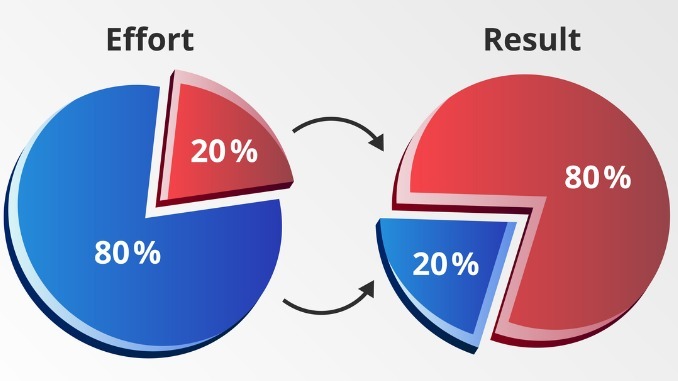
The Pareto Principle, or the 80/20 rule, offers a powerful framework for school business managers to focus their efforts on the tasks that drive impact and improve efficiency
Chances are, you’ve heard of the 80/20 rule, also known as the Pareto Principle, even if you aren’t familiar with the term itself. In essence, the Pareto Principle suggests that 80% of results come from just 20% of efforts. While it’s often discussed in terms of economics and wealth distribution (where 20% of the population owns 80% of the wealth), it’s a concept that can be applied to a wide variety of areas, including task management for school business managers.
The Pareto Principle, also referred to as the ‘principle of factor sparsity,’ can help you prioritise your time and efforts, making your workload more manageable and ensuring that your focus is on the most impactful tasks.
Rooted in Economics
Historically, the Pareto Principle was first noted by Italian economist Vilfredo Pareto in the early 1900s when he observed that 80% of the land in Italy was owned by just 20% of the population. Over time, this idea was expanded to various fields, showing that often, a small proportion of efforts, actions, or contributors account for most results. This pattern is known as a power law distribution and, when applied to task management, can guide school business managers in identifying where their time and energy will yield the greatest return.
Getting Started
To make the most of the Pareto Principle in your daily tasks, begin by listing everything you need to do. Then, assess which tasks will have the largest and smallest impact on your school’s success. Not all tasks are created equal – some actions, though they may seem small, can have a disproportionate effect on your overall objectives. Identifying these key tasks allows you to focus on what truly matters, boosting your productivity and the effectiveness of your efforts.
One effective way to do this is by assigning a value to each task based on its impact – this could be a numerical value (e.g., from 1 to 10) or even a monetary value, especially if the task directly affects the school’s budget. This simple system helps you recognise the relative importance of each task and helps you rearrange your work plan accordingly.
Identifying Blocks and Bottlenecks
Another key aspect of applying the Pareto Principle is recognising any bottlenecks or tasks that are delayed because you’re waiting on others. These can often have a ripple effect, preventing you from moving forward. Once you identify these, you can take proactive steps to either resolve them yourself or seek solutions that can allow you to move forward. This insight helps clear the roadblocks that might be holding up multiple projects at once, creating smoother workflows.
For example, let’s say you have a list of smaller tasks that includes resolving issues with network connections, following up on a slow website complaint and updating staff authorisation for access. While each of these tasks is important, you could prioritise them by recognising that a meeting with your IT provider to address broader infrastructure or system issues might solve all these smaller issues at once. By applying the Pareto Principle here, you leverage your time and resources more effectively, solving multiple smaller problems with one larger, more strategic task.
Moving the Needle
Using the Pareto Principle helps you streamline your workflow, minimise wasted effort and focus on what truly moves the needle for your school. By spending more time on high-impact tasks, you reduce the stress and overwhelm that comes from trying to manage everything at once. Ultimately, this method enables you to be more effective, make better use of your time and improve overall outcomes for the school. By prioritising your actions, you take charge of your workday with more confidence and focus, ensuring that you’re not just busy, but productive in ways that matter.


Be the first to comment